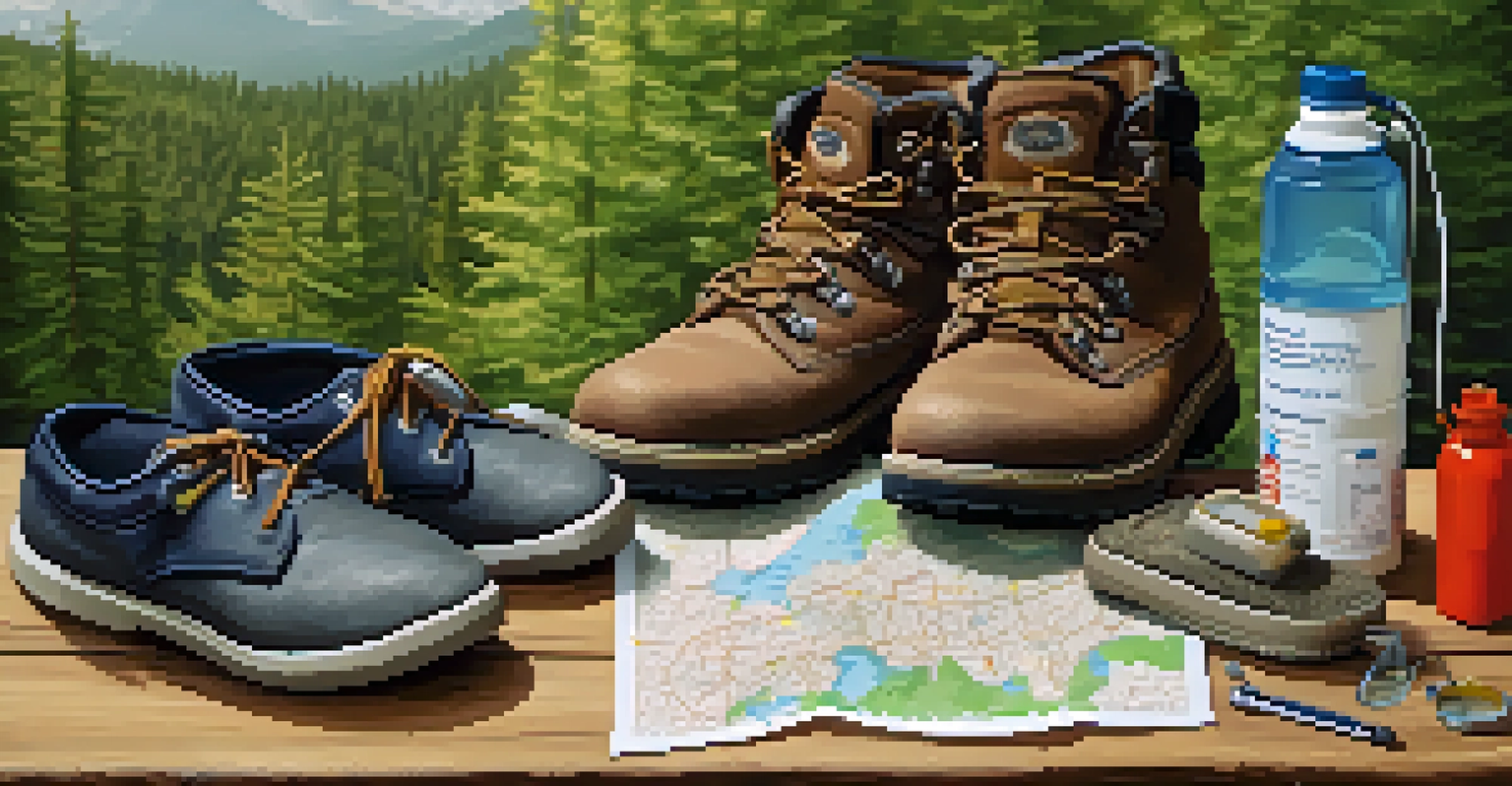Safety Tips for Hiking in Honolulu: Stay Safe Outdoors

Plan Your Hike and Know Your Trail
Before you lace up your hiking boots, take a moment to plan your route. Familiarize yourself with the trail map and understand varying difficulty levels to match your skill set. Honolulu features a range of trails, from leisurely walks to challenging hikes, so choose wisely to ensure an enjoyable experience.
In every walk with nature one receives far more than he seeks.
Check the weather forecast ahead of time. Honolulu's tropical climate can shift quickly, so being prepared for sudden rain or heat can make all the difference. Consider starting early in the morning to avoid the hottest part of the day and enjoy cooler temperatures while hiking.
Always share your hiking plans with a friend or family member. Letting someone know your intended route and estimated return time is a smart safety measure. If anything goes awry, this information can help rescuers locate you more efficiently.
Pack the Right Gear for a Safe Adventure
The right gear can be a game-changer when hiking in Honolulu's diverse environment. Comfortable hiking shoes are non-negotiable, as they provide support and traction on uneven terrain. Additionally, breathable clothing suited for warm weather will help keep you cool and dry.

Don’t forget to pack essentials like water, snacks, and a first-aid kit. Staying hydrated is crucial, especially in Hawaii's humid conditions. A few high-energy snacks can also keep your energy levels up, ensuring you enjoy the journey without fatigue.
Plan Your Hike for Safety
Familiarizing yourself with the trail and sharing your plans can enhance safety and ensure an enjoyable experience.
Consider bringing a portable charger for your phone and a map or GPS device. While phones are handy for navigation, they can run out of battery, especially if you're taking lots of photos. Having a backup plan can ensure you remain on track and connected.
Stay Hydrated to Combat Honolulu's Heat
Hydration is key when hiking in Honolulu, where temperatures can soar. Aim to drink water regularly, even if you don’t feel thirsty, to prevent dehydration. Carrying a hydration pack or water bottles can make it easier to sip throughout your hike.
The mountains are calling and I must go.
Watch for signs of dehydration, such as dizziness or dry mouth. If you start feeling any symptoms, take a break, find some shade, and drink water. It’s essential to listen to your body and take breaks as needed.
In addition to water, consider electrolyte-rich drinks for longer hikes. They can help replenish the minerals lost through sweat, keeping your energy levels stable. Just remember to balance these drinks with plenty of water to maintain optimal hydration.
Be Aware of Wildlife and Natural Hazards
While hiking in Honolulu, it's essential to respect local wildlife and understand the potential hazards. From small insects to larger animals, observing wildlife from a distance is crucial to keep both you and the animals safe. Avoid feeding wildlife, as this can alter their natural behaviors.
Be cautious of natural hazards like loose rocks, steep cliffs, and slippery paths. Always stay on marked trails to minimize risks and protect the ecosystem. If you encounter a steep area, take your time, and consider using trekking poles for support.
Stay Hydrated on the Trail
Regular hydration is crucial in Honolulu's heat, so always carry water and listen to your body's needs.
Additionally, be mindful of plants that might be harmful. Some native plants can cause skin irritations, so it's best to avoid touching unfamiliar flora. Knowing what to look for can enhance your hiking experience while keeping you safe.
Dress Appropriately for Your Hike's Conditions
Choosing the right clothing can significantly impact your comfort level while hiking. Lightweight, moisture-wicking fabrics will help manage sweat and keep you cool. Layering is also a good strategy, as temperatures can fluctuate, especially if you're hiking up in elevation.
Don’t forget to wear a wide-brimmed hat and sunglasses to protect yourself from the sun's rays. UV radiation can be strong in Hawaii, so applying sunscreen is also essential. Make it a habit to reapply every few hours, especially if you’re sweating.
Lastly, consider bringing a light rain jacket. Weather can be unpredictable, and a sudden downpour is not uncommon in Hawaii. Being prepared for all types of weather ensures that you can enjoy your hike without concern.
Understand Hiking Etiquette and Leave No Trace
Hiking in Honolulu also means engaging with nature responsibly. Familiarize yourself with hiking etiquette, such as yielding to uphill hikers and keeping noise levels down. Respecting fellow hikers and the environment creates a positive experience for everyone.
Adhering to the Leave No Trace principles is vital to preserving the beauty of Hawaii's trails. This includes packing out what you pack in, staying on designated paths, and minimizing your impact on the surroundings. Simple actions can help keep the trails pristine for future hikers.
Respect Nature and Local Customs
Understanding hiking etiquette and local traditions helps preserve the environment and fosters a positive hiking experience.
Additionally, be mindful of local customs and traditions. Some areas may be sacred to native Hawaiians, and understanding and respecting these sites is crucial. A little awareness can go a long way in fostering respect for both nature and culture.
Know When to Turn Back: Trust Your Instincts
Sometimes the best decision is to turn back. If you find the trail too challenging or the weather takes a turn for the worse, it’s okay to prioritize safety over completing the hike. Trust your instincts and don't hesitate to head back if you feel uncomfortable.
If your hike is taking longer than expected, assess the situation. It’s better to cut your hike short than to risk being out after dark, as visibility decreases significantly. Planning your hike with time constraints in mind can help prevent such situations.

Remember, hiking is about enjoyment and exploration, not pushing your limits. Every trail will be there for another day, so embrace the experience of being outdoors, but know when to put safety first.